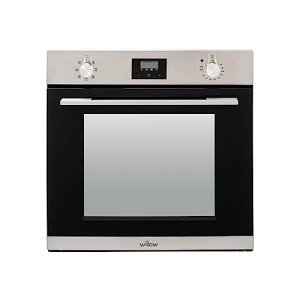The Reasons You Shouldn't Think About Making Improvements To Your Oven Built In

The Rise of Built-In Ovens: A Seamless Approach to Modern Cooking
In contemporary cooking areas, where style aesthetics mix flawlessly with performance, one appliance sticks out as a true video game changer: the built-in oven. As homeowners and chefs alike continue to seek ingenious services that boost their cooking experience, built-in ovens have ended up being significantly popular. This short article checks out the advantages, factors to consider, and patterns surrounding built-in ovens, highlighting why they are a vital feature in modern cooking areas.
What is a Built-In Oven?
A built-in oven is a cooking area device designed to be integrated into the cabinetry of a cooking area rather than standing alone. Unlike conventional freestanding ovens, which can be moved and placed anywhere, built-in ovens come in numerous designs and sizes to fit specifically within designated areas. Available in single or double configurations, these ovens offer a structured appearance that matches modern-day kitchen area styles.
built in ovens and microwaves Ovens & Hobs of Built-In Ovens
1. Space-Saving Design
One of the most enticing benefits of built-in ovens is their space-saving design. By integrating the oven into cabinets, you can maximize important counter and floor area. This is especially helpful in smaller sized kitchens, where optimizing space is necessary. Built-in ovens can be set up at eye level, making them more available and lowering the requirement to flex down.
2. Visual Appeal
Built-in ovens add to a streamlined and cohesive kitchen style. Available in numerous finishes-- such as stainless steel, black, white, and customized kitchen cabinetry-- they can blend effortlessly into the total decor. This visual appeal boosts the cooking area's visual harmony and elevates the area, producing a modern-day and sophisticated environment.
3. Enhanced Functionality
Numerous built-in ovens come geared up with sophisticated cooking innovations, such as convection cooking, steam ovens, and wise features. These enhancements permit for versatile cooking options, making it easier to achieve professional-level results in the house. Smart built-in ovens can even link to Wi-Fi, allowing users to manage the oven remotely, get notices, and access a variety of cooking programs and recipes.
4. Enhanced Ventilation
Because built-in ovens can be integrated with cooking area hoods and ventilation systems, they can assist preserve much better air quality and minimize cooking odors. This is specifically considerable for those who love to cook with fragrant spices and active ingredients, as an effective ventilation system can keep the kitchen area comfy and welcoming.
5. Personalization Options
Built-in ovens use a large range of personalization options to match specific cooking designs and needs. From professional-grade home appliances with multiple cooking modes to compact styles for smaller sized kitchens, property owners can choose the oven that fits their specific requirements. Numerous manufacturers also provide customizable front panels, allowing you to match the oven's appearance to your cabinetry for a really unified appearance.
Factors to consider When Choosing a Built-In Oven
While built-in ovens have lots of advantages, there are very important factors to consider to bear in mind before buying:
1. Rate
Built-in ovens normally come with a higher cost than their freestanding counterparts due to their design and installation requirements. It's crucial to consider both the expense of the oven and any additional expenses related to cabinets modifications or setup.
2. Setup Requirements
Setting up a built-in oven often requires expert support, specifically if you need to modify existing cabinets. Ensure that you consider any costs connected with setup, consisting of labor and possible kitchen cabinetry adjustments.
3. Size and Dimensions
Before purchasing a built-in oven, measure the designated space accurately to ensure an appropriate fit. Built-in ovens can be found in numerous sizes and configurations, so picking one that aligns with your needs and cooking area design is important.
4. Lifestyle and Usage
Consider your cooking routines and needs when selecting a built-in oven. If you often host big events, a double oven may be more useful. On the other hand, if you have a compact kitchen, a single-wall oven may be adequate.

Trends in Built-In Ovens
The kitchen area device market is constantly progressing, and built-in ovens are not exempt from emerging trends. Some current patterns consist of:
Smart Technology Integration: With the increase of clever home innovation, built-in ovens now often feature connectivity alternatives. This enables users to keep track of cooking progress and change settings by means of mobile apps.
Energy Efficiency: As sustainability ends up being a concern, numerous makers are buying energy-efficient built-in ovens that reduce energy consumption while keeping performance.
Multi-functional Designs: Built-in ovens now offer functions such as air frying, sluggish cooking, and steaming, providing adaptability that meets a wide variety of cooking techniques.
Conclusion
Built-in ovens certainly represent an ideal mix of design, function, and convenience in today's cooking areas. As more house owners choose for this modern service, the focus shifts to creating a cooking area that is as aesthetically pleasing as it is useful. Whether you are developing a brand-new home or renovating your cooking area, thinking about a built-in oven could elevate your culinary experience and change your kitchen into an elegant and practical sanctuary. With a range of alternatives offered and continuous developments in technology, built-in ovens remain a standout option for both amateur cooks and cooking enthusiasts alike.
